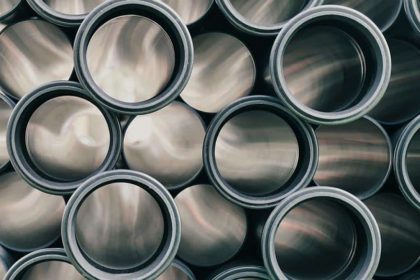What is Styrene Sign? Okay, let’s chat about something you probably encounter every day without even realizing it—styrene. This fascinating compound might not be a household name, but it plays a major role in our daily lives, from the coffee cups we sip from to the insulation that keeps our homes cozy.
Styrene is everywhere, acting as a building block for products we rely on, yet it often flies under the radar. If you’ve ever wondered what makes your lightweight electronics or durable plastic car parts, chances are, styrene is the star player behind the scenes.
The journey of understanding styrene doesn’t have to be baffling. By learning about its significance and versatility, we can better appreciate its contributions to modern living. Let’s explore the ins and outs of this hidden hero and find out why it’s more than just a complex chemical name.
Importance of Styrene in Various Industries
Styrene truly shines when we see how it supports various industries, making it a bit of a superstar! Take the automotive industry, for instance, where styrene helps create tough but lightweight parts. This not only makes vehicles more fuel-efficient but also more affordable, which we can all appreciate.
In construction, styrene-based products like insulation materials keep buildings energy-efficient and provide crucial structural support. And let’s not forget about packaging. Those protective containers that guard delicate electronics or the takeout box that holds your dinner all benefit from styrene’s magic touch.
The world of electronics isn’t left out either. Styrene lends a hand in crafting components that make gadgets lighter and more user-friendly. It even has a role in the medical field, where sterility is paramount, by contributing to safe and reliable equipment.
Yes, styrene’s importance cuts across so many facets of our daily lives, supporting the products and systems keeping the modern world ticking. And by understanding its role, we gain a new appreciation for how innovation often hinges on such key materials. Isn’t it amazing how something so seemingly simple can be so impactful?
Health and Safety Concerns Associated with Styrene
As much as styrene plays a vital role in numerous industries, it’s important to stay aware of the health and safety aspects tied to its use. You see, like many industrial materials, its benefits come with certain risks that shouldn’t be ignored.
Primarily, exposure to styrene can occur through inhalation, which might lead to some uncomfortable symptoms. Folks working directly with styrene need to be cautious, as long-term exposure has been associated with effects on the nervous system, causing issues like headaches, fatigue, and irritability.
And with that in mind, it’s crucial not to overlook the potential environmental impact. Ensuring that styrene doesn’t make its way into our water systems is a big part of responsible usage and disposal. Companies are tasked with conducting operations in a manner that protects our ecosystems.
For everyday consumers, the exposure risk is low, but it’s still wise to be informed. Regulations and safety measures are in place to minimize risks at all levels, from production to final products, making awareness the first step to safety. After all, understanding these concerns helps us all make more thoughtful choices.
Economic Impact of Styrene Usage
Styrene doesn’t just contribute to the products we use every day; it also powers a big chunk of the economy. With its role in manufacturing everything from packaging to vehicles, styrene supports numerous industries, making it a key player in the economic landscape.
Businesses that rely on styrene create a wide array of jobs, from manufacturing plants to research and development teams. This cascade of employment opportunities supports local economies and provides countless livelihoods.
It’s also worth noting, styrene products often allow for cost-effective manufacturing, which can result in lower prices for consumers. The affordability of products made using styrene helps keep industries competitive and accessible, boosting market dynamics.
Internationally, the styrene market is a bustling arena, with significant trade activities. Countries that produce styrene-based products often see a boost in trade revenues, contributing to economic growth on a global scale.
The economic ripple effect of styrene usage is vast and multifaceted. While it’s easy to get lost in the technical details, it’s truly fascinating to see how one compound can be such a powerhouse in the economy!
Styrene Usage in Printing Industry
Styrene, a versatile plastic material, finds significant application in the printing industry. Its lightweight, smooth surface, and flexibility make it an ideal substrate for various printing projects. Styrene is commonly used for creating high-quality, durable signs and displays. It can be printed on both sides, allowing for maximum visibility and impact. The material’s resistance to water, chemicals, and UV rays ensures long-lasting prints, even in outdoor conditions. Additionally, styrene can be easily cut and shaped, making it suitable for custom designs and intricate details. Its affordability and ease of handling further contribute to its popularity in the printing industry.
Environmental Considerations Related to Styrene
While styrene offers numerous benefits to industries and economies, there are environmental aspects that need careful attention. The production and disposal processes can have impacts that necessitate responsible management and innovative solutions.
During manufacturing, emissions and waste need to be controlled to minimize their environmental footprint. Companies are increasingly adopting cleaner technologies and practices to reduce air and water pollution associated with styrene.
Recycling is another crucial factor. Styrene-based products, like polystyrene, can be challenging to recycle efficiently. This challenge has sparked efforts in developing better recycling methods and encouraging sustainable alternatives.
Additionally, environmental regulations play a vital role in guiding how styrene is managed. These laws help ensure that businesses prioritize eco-friendly practices and maintain a balance between usage and conservation.
Ultimately, focusing on environmental considerations can lead to innovations that not only protect the planet but also enhance sustainability within the styrene industry. It’s all about finding that sweet spot where industry and environment can thrive together.

Future Trends and Innovations in Styrene Utilization
In the world of styrene, the future looks bright with exciting trends and innovations on the horizon. As industries strive to become more sustainable, the focus is shifting towards greener production methods and eco-friendly alternatives.
Sustainable Solutions on the Rise
One of the most promising trends is the development of bio-based styrene. Researchers are exploring ways to produce styrene using renewable resources, which could significantly reduce its carbon footprint and reliance on fossil fuels.
Innovation isn’t limited to production. In terms of product design, there’s a growing interest in creating more durable and versatile styrene products that can withstand wear and tear, extending their lifecycle and reducing waste.
Advanced recycling technologies are also emerging, aiming to tackle the challenges of recycling styrene-based materials. These innovations could transform waste management practices and help make styrene a part of the circular economy.
Looking ahead, the integration of digital technologies, like artificial intelligence, could optimize styrene manufacturing processes, enhancing efficiency and reducing resource consumption. This fusion of technology and materials science may redefine how we use and perceive styrene in the years to come.
The Bottom Line: Embracing the Versatility of Styrene
Styrene’s journey from a simple chemical compound to a crucial element in countless everyday products is quite impressive. It’s all around us, playing a key role in things like packaging, construction, and even our cars.
Yet, as we move forward, it’s important to balance styrene’s utility with sustainability. The call for cleaner, more responsible production methods is growing louder. It’s clear that embracing the greener alternatives, like bio-based styrene, could pave the way for a more environmentally-friendly future without compromising the benefits that styrene offers.
Besides this, the innovations in recycling and digital technologies offer a promising path towards reducing waste and optimizing efficiency. By tapping into these advancements, industries can continue to harness styrene’s potential while aligning with sustainable practices.
Ultimately, the versatility of styrene is its greatest strength. It’s adaptable and capable of evolving to meet the demands of modern society. By welcoming innovations and being mindful of sustainability, we can continue to benefit from everything styrene has to offer.
In short, styrene remains a stalwart in the materials world. Embracing its adaptability and potential for innovation ensures that it will continue to be an essential component in everyday life, aligning with both our practical and environmental goals.









